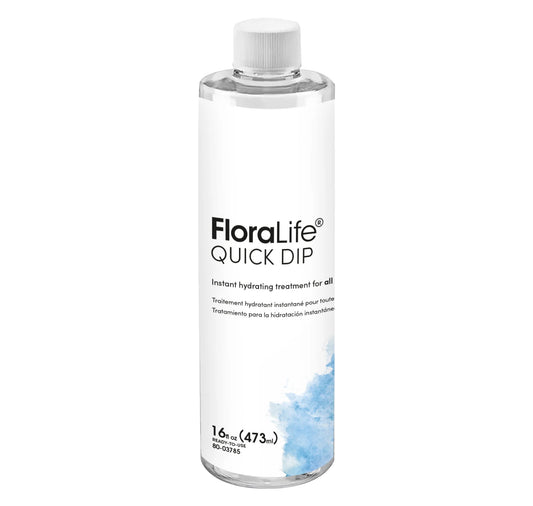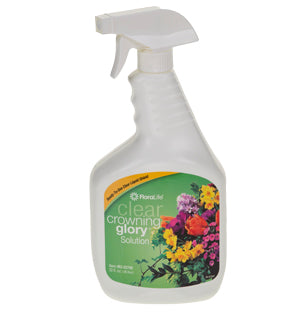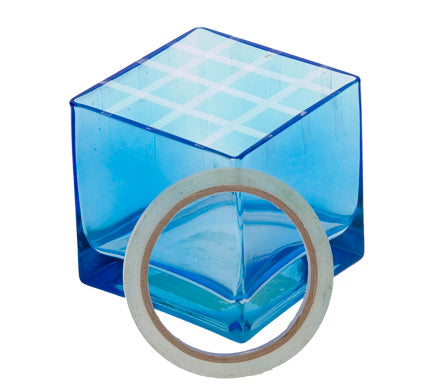Pretty in Pink Compote
Pink is such a flower-friendly color and can add a little bit of cheer to any space. It looks especially fresh when paired with white. In this Flower School How-To Video Leanne creates a foam-free design in an elegant glass compote, using wonderful flowers from Florabundance.com, including orlaya, jasmine vine, deflexus, garden roses, sweet peas, and miniature callas. It's a show-stopper -- enjoy!
Video Transcription
Pretty in pink, a flower-friendly color. Fabulous in a compote and foam-free, of course. Let me show you how it's done.
The materials, everything from our friends at Florabundance.com. I started with the beautiful garden roses, Millicent. They're grown at Alexandra Farms. Then beautiful callas, sweet peas. The mechanics, starting with a compote, and I want to put a combination: a kenzan to give me support, as well as floral matting. To do that, I need to conceal. Easiest, just to take Aspidistra leaves; remove the back vein, cut it down; then once that's clear, can set that into the dish; repeat; then you can place in the kenzan, the matting, add a few more leaves to make sure it's all concealed; and then once you have everything in place, just tape it using clear, waterproof tape. Then add fresh water pre-mixed with flower food.
With mechanics concealed, there's time to add just a little more foliage, maybe some deflexus? Has such nice draping. Feeding it in, making sure it gets into the netting well, and then just winding it around, and you can actually tuck it into the tape and the wire to hold it in place, then repeating that. A few more pieces, giving some drape, maybe coming out over the side, finding the perfect spot. And then when you have a base to begin, you can go back. Tuck in your roses, tuck in each of the blooms that you love, removing some of the thorns, letting it draw the eye in towards the center. And then with the callas, drawing the eye out towards the side so that you get movement in the arrangement. Same with the sweet peas, letting them come outward, giving it a very free-flowing look, as you begin to build the compote.
As you work, think about the lines you're creating, the emphasis, and then continue building. Bringing the callas off on the opposite side to make that color come through, finding a perfect spot, and then bringing the sweet peas across and through, carrying that pink. And then continue filling in with the roses to make sure that you have a substantial emphasis area to support everything else.
With your main flowers in place, you can come back; add texture, contrast, a bit of yarrow, tucked down low to draw the eye inward, maybe a bit of jasmine vine, letting it trail outward, giving even more movement to the arrangement. And aurelia, so delicate, letting it come a little taller, drawing the eye up in the arrangement, making sure it gets down into the kenzan, because that's what will hold it in place, even more so than the floral netting.
The recipe, everything from our friends at Florabundance.com. I started with the Aspidistra leaves to conceal all my mechanics, used five of them to tuck in there. Then to enhance with the texture, Deflexus. Yes, everybody always says, what is that? It's in the asparagus family, and Florabundance does have it. Deflexus is super long-lasting and doesn't shed as badly as many of the asparagus family. Then I went to the flowers. Of course, the Millicent Garden Rose. Five of those, long-lasting and fabulous. Sweet Peas to extend the line. Used a total of seven. Then the Callas. So dramatic and fabulous. Six of those. Then once the flowers in place, adding in the texture: five stems of Jasmine Vine, five stems of the Yarrow, and then five stems of Aralia to add that little soft touch.
There are so many grand, pink flowers. It's easy to make a fabulous compote. You'll find more inspiration and more colors in a compote on our website, FlowerSchool.com. If you have questions, you can reach us through there, but now it's your turn. Find your favorite pink blossoms, gather a compote, and design away. Be sure to take a picture and post it on social media, #FloralDesignInstitute. That way we all can see what you do as you do something you love.






